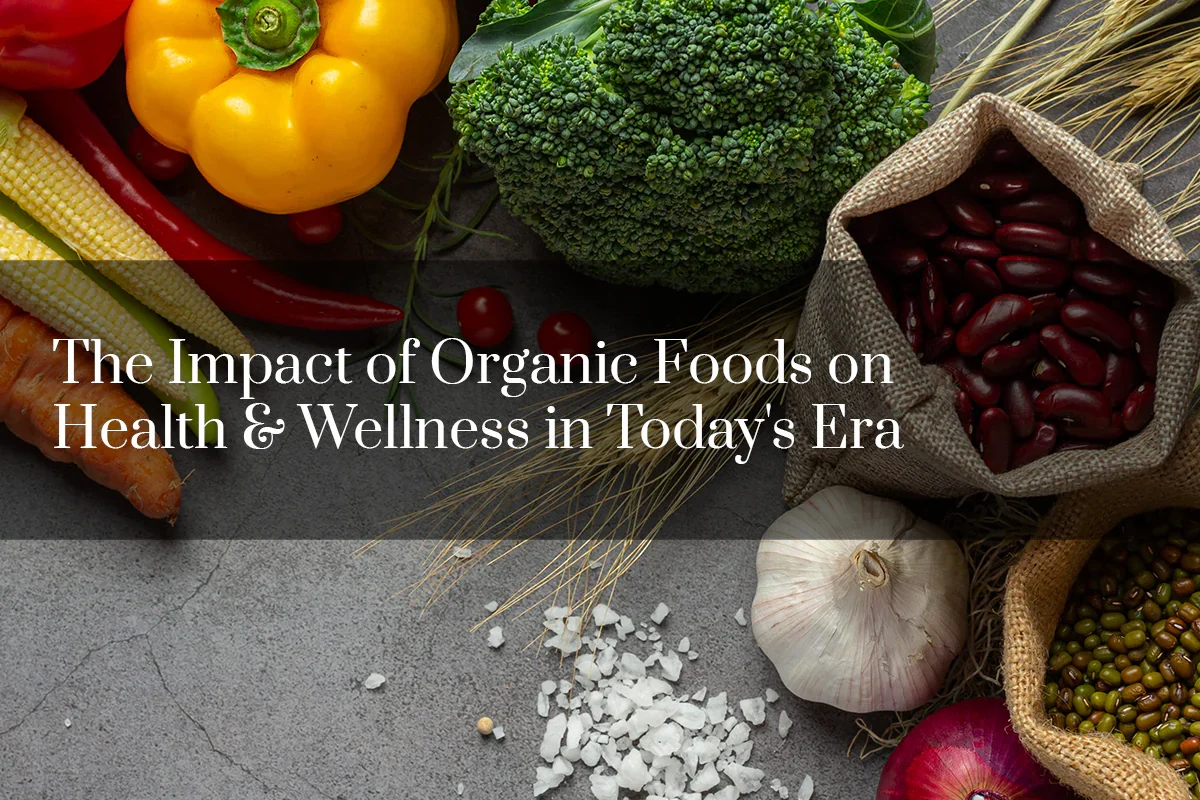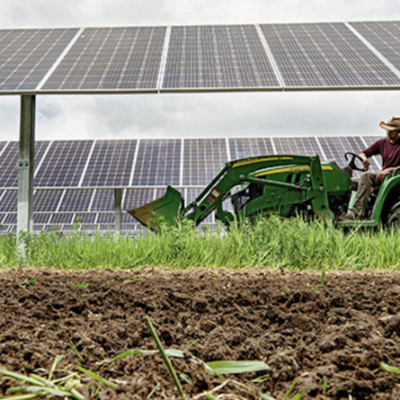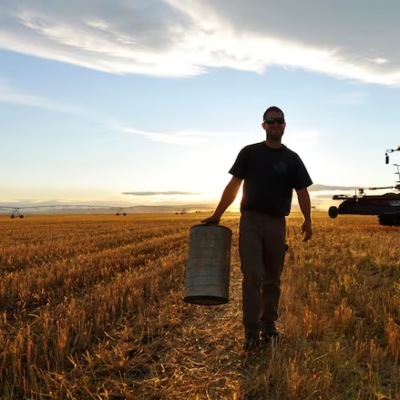The organic food movement in the U.S. has been gaining significant momentum over the past few decades. What started as a niche interest in alternative farming and nutrition has transformed into a mainstream lifestyle for many Americans. As consumers become more conscious of their health and the environment, organic foods have grown in demand, and the U.S. has seen major strides in adopting organic farming practices.
This movement isn’t just about avoiding pesticides or synthetic fertilizers; it’s also about sustainability, supporting local farmers, and fostering a healthier ecosystem. However, despite the growth and increased availability of organic options, the movement still faces challenges, from cost barriers to misconceptions about organic products.
This article delves into the current state of the organic food movement in the U.S., exploring where it stands today, the factors driving its growth, and the challenges it faces moving forward. We’ll examine the evolution of organic foods, their impact on health and the environment, and the economic influence of the industry, all while offering insights into future trends.
1. The Rise of the Organic Food Movement
The organic food movement in the U.S. dates back to the 1940s and 1950s, but it really started to pick up steam in the 1960s and 1970s. Initially, it was championed by health-conscious individuals and environmental activists who wanted to offer an alternative to industrialized farming practices that relied heavily on chemicals and synthetic pesticides. The movement was influenced by pioneers such as J.I. Rodale, founder of Rodale Organic Gardening magazine, and later, organizations like the Organic Trade Association (OTA).
In the 1990s, consumer awareness began to grow, partly due to the increasing concerns over the health risks associated with conventional farming methods. The creation of the National Organic Program (NOP) by the U.S. Department of Agriculture (USDA) in 2002 helped legitimize organic certification, providing consumers with assurance that they were buying truly organic products.
In the years following, organic food sales skyrocketed, and supermarkets began dedicating larger sections to organic produce, dairy, and packaged foods. As of 2024, the organic food industry is worth over $60 billion annually in the U.S. alone. The appeal of organic food extends beyond just health-conscious consumers—it’s become a cultural trend, with organic options now being seen in fast food chains and mainstream grocery stores.

2. Organic Food Trends: What’s Popular Today?
Today, the organic food market in the U.S. is diverse, with consumers embracing a wide variety of organic products. Organic fruits and vegetables remain the most popular categories, with produce like spinach, carrots, and strawberries among the top sellers. Organic dairy products, such as milk, cheese, and yogurt, have also seen significant growth, driven by consumer desire to reduce hormone and antibiotic consumption.
The rise in organic meat and poultry is a notable trend, driven by a desire for more sustainable farming practices and more humane treatment of animals. Consumers are increasingly turning to organic meats and eggs, as these products are produced without antibiotics or hormones. Grass-fed beef and free-range chicken are particularly in demand.
Packaged organic foods, including snacks, cereals, and frozen meals, have surged in popularity, as more people adopt organic diets without wanting to sacrifice convenience. The increasing availability of organic options in fast food chains, especially in urban areas, has also made it easier for consumers to integrate organic eating into their busy lives.
3. The Benefits of Organic Food: Health and Sustainability
The health benefits of organic food are often cited as a primary reason for its growing popularity. Organic foods are grown without synthetic pesticides, fertilizers, or genetically modified organisms (GMOs), which has led many to believe that they are inherently healthier than conventionally grown alternatives. Research has shown that organic produce often contains higher levels of antioxidants and beneficial nutrients, which can help boost the immune system and reduce inflammation.
Furthermore, organic food is often seen as a way to avoid harmful chemicals, such as pesticides, which can be linked to various health issues, including cancer, hormone disruption, and neurological problems. By choosing organic, consumers are not only opting for a safer food choice but also supporting farming practices that prioritize the health of the soil, water, and surrounding ecosystems.
Sustainability is another key factor driving the organic food movement. Organic farming practices are designed to minimize environmental impact by using crop rotation, composting, and other methods that improve soil health and reduce water pollution. Organic farms are also more likely to focus on biodiversity, supporting a variety of plant and animal species, which is vital for maintaining ecological balance.
Another important environmental benefit of organic farming is its lower carbon footprint. Studies show that organic farming tends to require less energy than conventional farming because it avoids the use of synthetic fertilizers and pesticides, which are energy-intensive to produce. Additionally, organic farming helps sequester more carbon in the soil, contributing to climate change mitigation.

4. Economic Impact of Organic Foods
The economic impact of the organic food movement in the U.S. is substantial. As mentioned earlier, the organic food industry is worth over $60 billion annually and continues to grow each year. This growth has created thousands of jobs in organic farming, retail, and food production. According to the Organic Trade Association, organic farming supports more than 300,000 jobs in the U.S., ranging from farm workers to food processors and marketers.
Local economies also benefit from the organic food movement, as small and mid-sized farms make up a large portion of organic food production. Organic farming tends to be more labor-intensive, which means it creates more employment opportunities per acre compared to conventional farming. Many organic farms sell their products directly to consumers through farmers’ markets, community-supported agriculture (CSA) programs, and local grocery stores, helping to strengthen local economies.
Organic certification has become a lucrative business for many farmers, allowing them to charge premium prices for their products. However, organic certification also comes with costs and regulations that may pose challenges for small farmers. Despite this, many farmers find the investment worthwhile, especially as demand for organic products continues to rise.
5. Challenges Facing the Organic Food Movement
While the organic food movement has seen remarkable growth, it still faces several challenges. One of the most significant hurdles is the cost barrier. Organic foods are often more expensive than conventional alternatives due to higher production costs. Organic farming typically requires more labor and more stringent certification processes, which increase the cost of production. As a result, many consumers are deterred by the higher prices, limiting access to organic food for low-income families.
Supply chain issues also pose a challenge. Although organic food is in high demand, the supply of organic products doesn’t always keep up. Organic farms can face difficulties in scaling up production to meet demand, and some farmers may struggle to secure organic certification or adhere to strict farming practices.
There are also misconceptions about organic foods that can hinder the movement. Some consumers believe that organic foods are always healthier, but organic doesn’t necessarily mean higher nutritional value or better taste. Additionally, there’s a common misconception that organic farming can’t meet the food needs of a growing global population. While organic farming practices are more sustainable in many ways, they may not always be able to match the yields of conventional farming without significantly expanding land use.
6. The Future of Organic Food in the U.S.
Looking ahead, the organic food movement in the U.S. shows no signs of slowing down. The younger generation, particularly millennials and Gen Z, are driving a large portion of the demand for organic products. These groups tend to be more environmentally conscious and health-focused, prioritizing organic and sustainable food choices.
Technological advancements are likely to play a significant role in the future of organic farming. Precision agriculture, which uses technology to optimize crop yields while minimizing environmental impact, could help organic farmers improve efficiency and productivity. Additionally, innovations in vertical farming and hydroponics may offer new ways to grow organic food in urban areas, further expanding access to organic options.
The continued expansion of organic food in mainstream grocery stores and restaurants is expected, as more retailers recognize the profitability of organic products. As supply chains improve and economies of scale take effect, organic food may become more affordable for a larger segment of the population.
The future also holds promise for improved regulation and certifications that will help consumers make more informed decisions about their food choices. As awareness of the benefits of organic food continues to grow, the movement may evolve into a more mainstream and sustainable aspect of the American food system.
Conclusion
The organic food movement in the U.S. has come a long way since its humble beginnings, and today it is a significant force in the food industry. With growing demand driven by health, sustainability, and environmental concerns, the organic food market continues to expand, offering new opportunities for both consumers and farmers.
While challenges remain, such as cost barriers and supply chain issues, the future of organic food in the U.S. looks promising. Advances in technology, changes in consumer behavior, and stronger support for local and sustainable farming will likely ensure that the movement continues to thrive.
For those looking to support the organic food movement, it’s more important than ever to make conscious food choices. By prioritizing organic foods, consumers can make a difference in their health, the environment, and the future of farming in the U
For more click here –Why the Collectors Meal Craze Is Taking Over Fast Food
.






